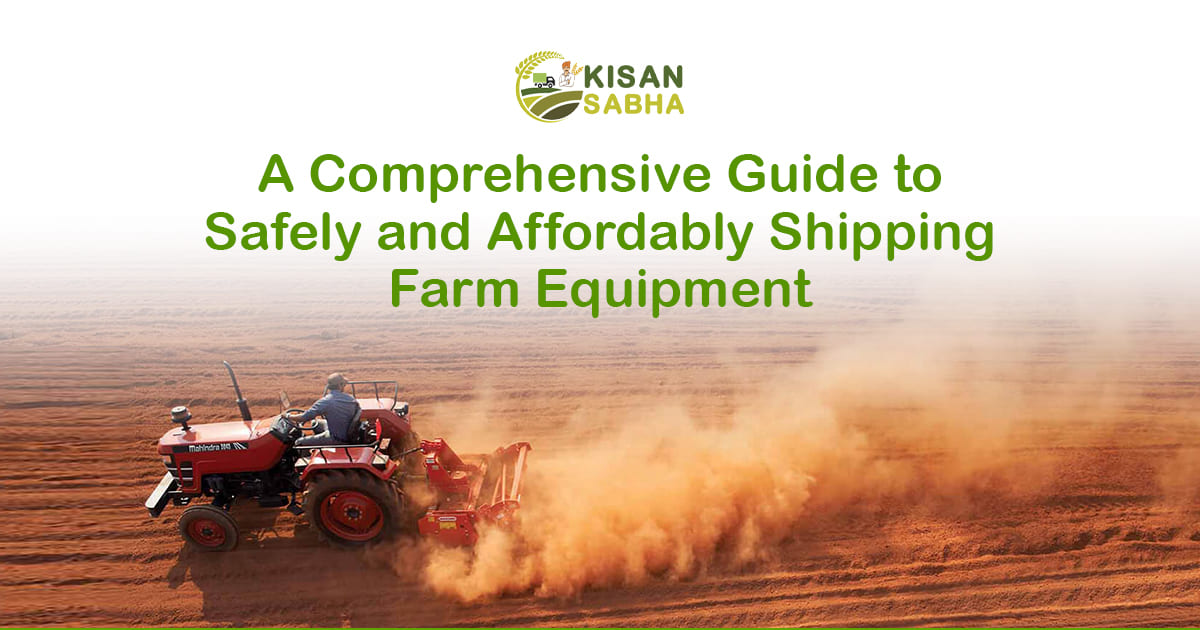Shipping farm machinery may be a difficult task owing to the sheer length, weight, and fragility of the equipment. However, with careful preparation and a strategic approach, it is quite possible to move agricultural equipment effectively and inexpensively. This page aims to give a comprehensive guide on how to export agricultural equipment, including key stages, concerns, and cost-saving solutions.
Initial assessment of farm equipment shipping.
There is a brilliant variation in the size, weight, and fragility of the agricultural system. Extensive machinery, which includes tractors, may be extraordinarily considerable and heavy, necessitating particular coping with and transporting techniques. Sensors and precision mechanisms are examples of delicate components. And they need to be careful with their handling to avoid harm at some stage in the shipment.
To pick exceptional transport alternatives and ensure that vendors and freight forwarders can cope with the equipment’s length and weight constraints, it’s important to recognize the size and weight of the equipment. For secure transportation, oversized or overweight objects can also need positive permissions and devices.
Selecting the Correct Shipping Option
Making the right transport method preference is essential to ensuring the affordable and stable cargo of farm gadgets. Here are some ordinary choices to consider:
Flatbed Trucks; Transporting huge, heavy, or sizeable farm gadget is best done using flatbed trucks. They consist of simple loading and unloading capabilities and can assist a range of machines.
Enclosed Trailer: Enclosed trailers provide climate safety and are suitable for smaller equipment or equipment that desires greater security while in transportation.
Less Than Truckload (LTL) Handing Over: When delivering smaller devices or combining numerous shipments, LTL transport is a cheap choice. You can divide the fee with other shippers using this approach.
Freight forwarders: With their understanding of logistics, freight forwarders may additionally provide customized answers. they will help in turning in agricultural equipment over large distances or worldwide.
Documentation and Insurance
Proper coverage is critical when transporting farm gadgets. Review your current policy for transportation insurance. If inadequate, do not forget to buy extra shipment coverage or select a transport agency that presents complete insurance alternatives. This protects against loss or harm at some stage in transit. It also makes sure your equipment is financially safeguarded during transport. It is crucial to have the right documentation for an easy delivery system. Make certain all vital office work, together with bills of lading, customs files (for international shipments), and any necessary permits or licenses, is organized and nicely organized. Keep all documentation copies of your facts and offer copies to the service.
Also Read : What is the Difference Between Compost and Fertilizer?
Freight agents
The complicated nature of the delivery of heavy equipment (mainly urgently) might also necessitate that the shipper have a session with a certified and skilled freight broker. If you’re wondering what a freight broker is, a freight broker is a third-party professional who connects shippers with carriers (or haulers). On the surface, this can seem needless, however, a great freight broker may be as invaluable as the freight itself. Freight brokers are industry specialists with years of on-the-job experience. They will help you get your heavy machinery shipped in a safe and inexpensive manner. By linking up the most legit and capable vendors with their shippers, using a freight dealer is an outstanding way to make sure someone is prioritizing your transport wishes and getting your machinery to its destination in the most well timed of manners.
Strategies for Cost-Effective Shipping of Farm Equipment
When it comes to delivery farm devices, charges can quickly add up. Nonetheless, there are a variety of tactics you may use to save costs:
- Obtain and compare quotations: To assess the pricing and offerings of many shipping groups, request quotations from each. Before making a choice, take into account important aspects, including client feedback, transit times, and coverage coverage.
- Consolidate Shipments: Keep in mind to combine any system components you need to supply into a single, unmarried shipment. Sharing the cost of transport can help reduce expenses.
- Plan Ahead: Scheduling your shipping in advance will enable you to negotiate a better price and steer clear of any unforeseen last-minute charges.
- Optimize packing: Delivery costs can be reduced by using effective packing. When feasible, steer clear of unnecessary packing materials and choose popular-sized containers
In conclusion,
Careful preparation, considering your alternatives for transportation, utilizing the correct packaging, and getting the right insurance are all necessary for the safe and affordable shipping of agricultural equipment. Farmers and device owners may ensure smooth and powerful transportation in their equipment by following the advice provided in this handbook and using cost-cutting measures. To guarantee a hassle-free delivery experience, it is essential to work with reputable delivery providers and seek expert guidance when necessary.





